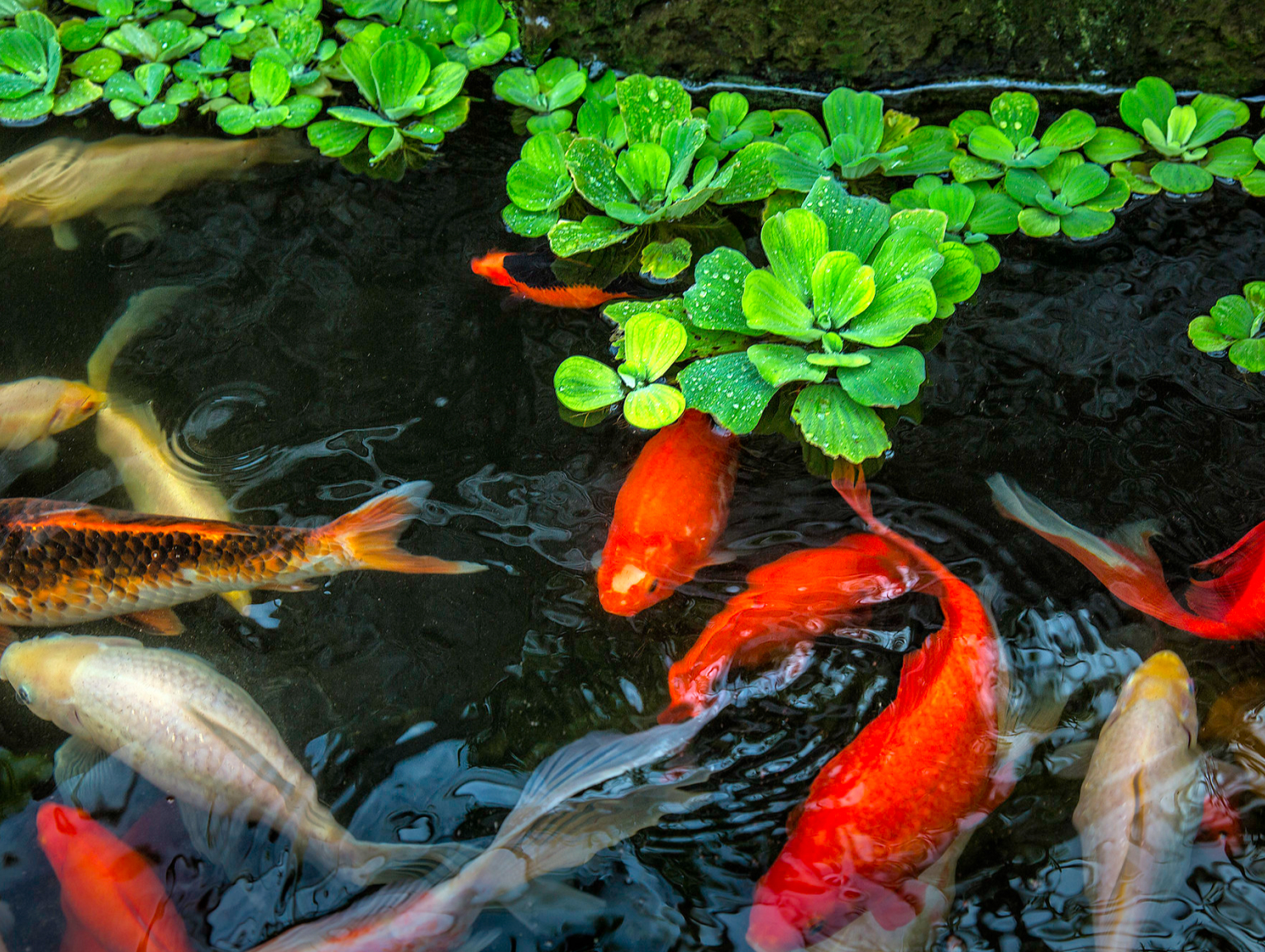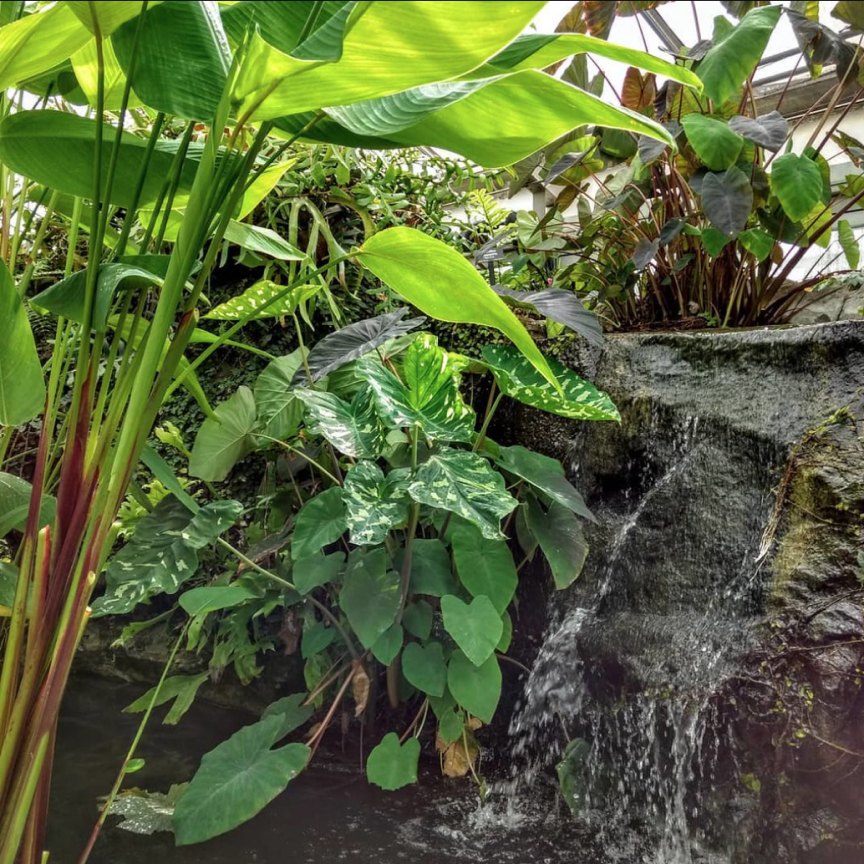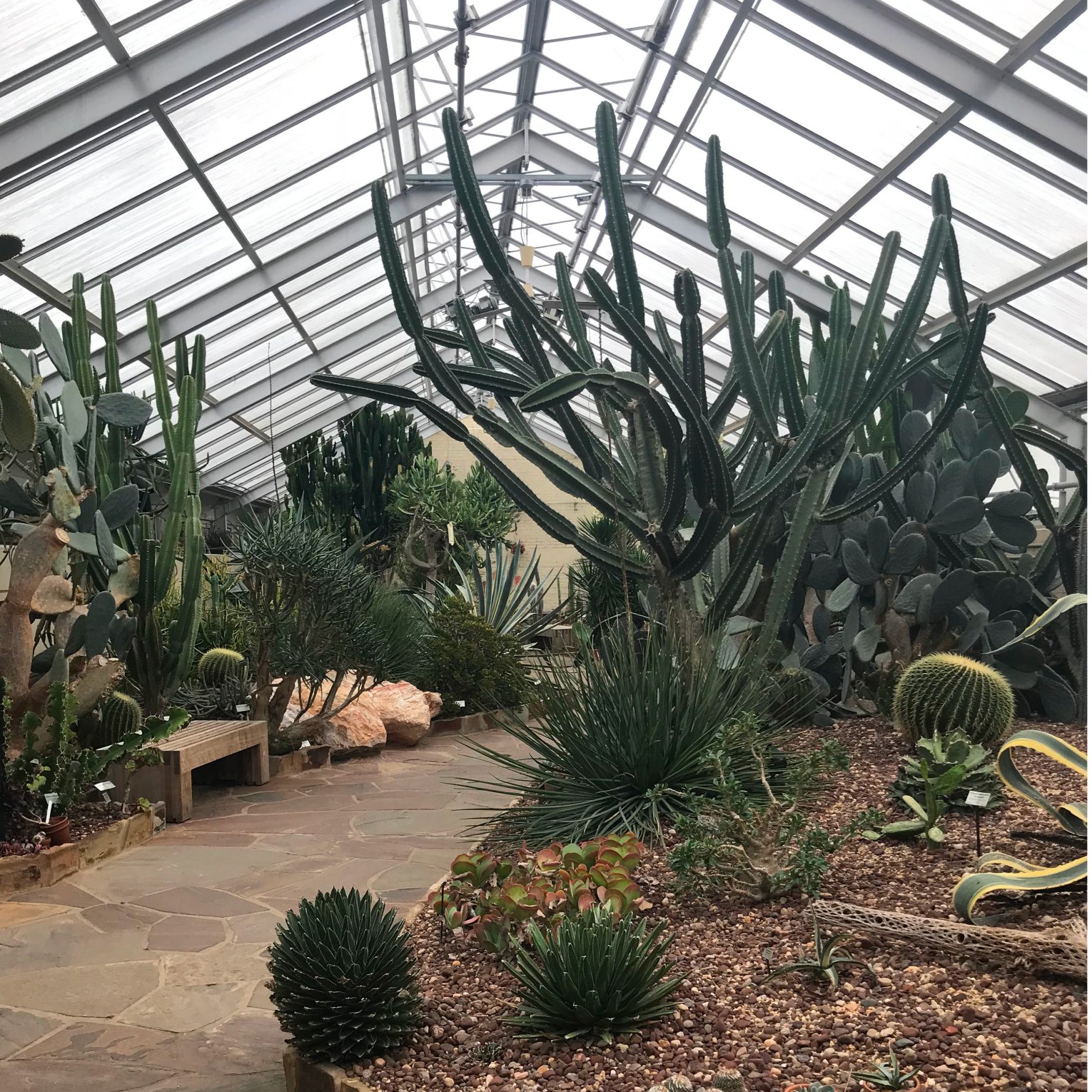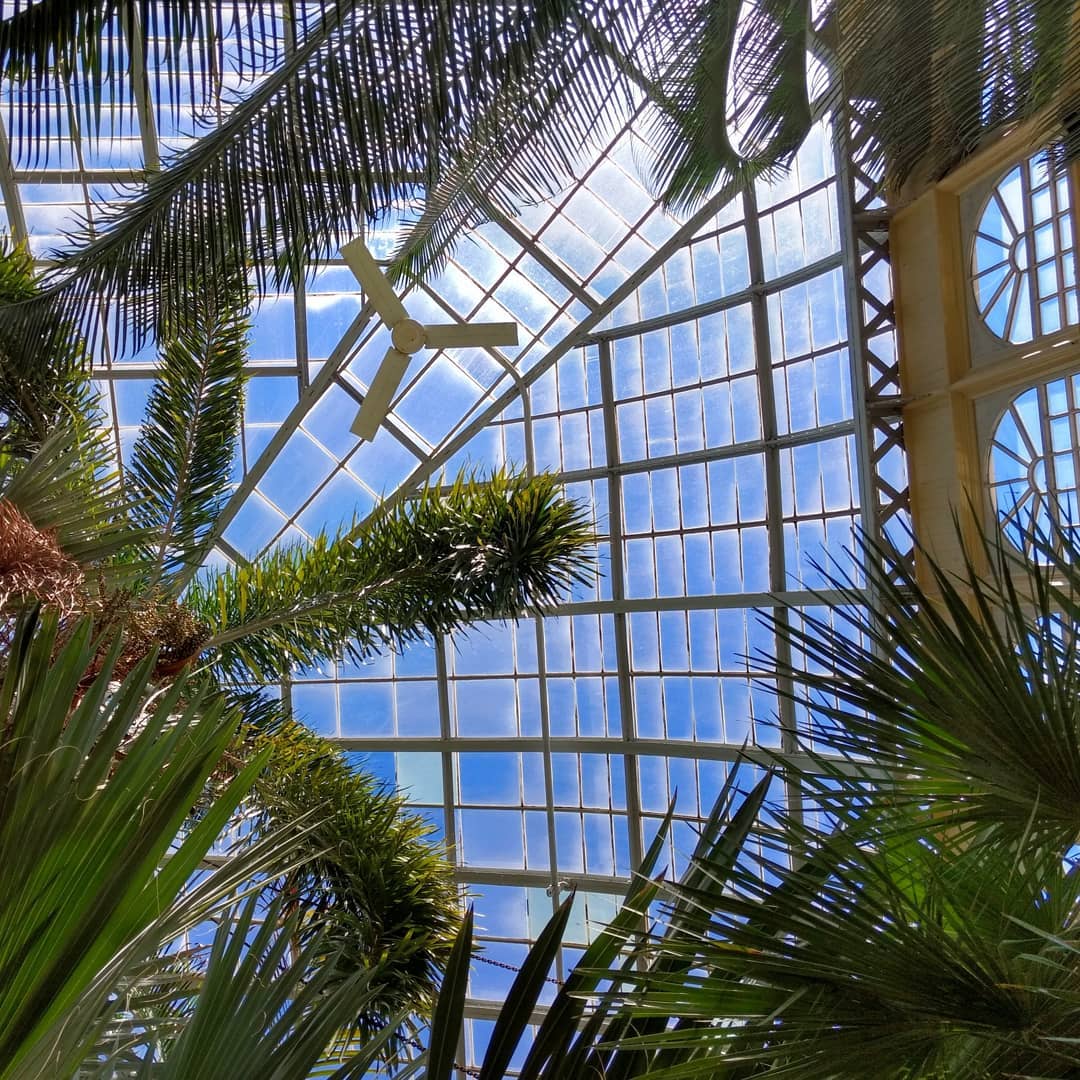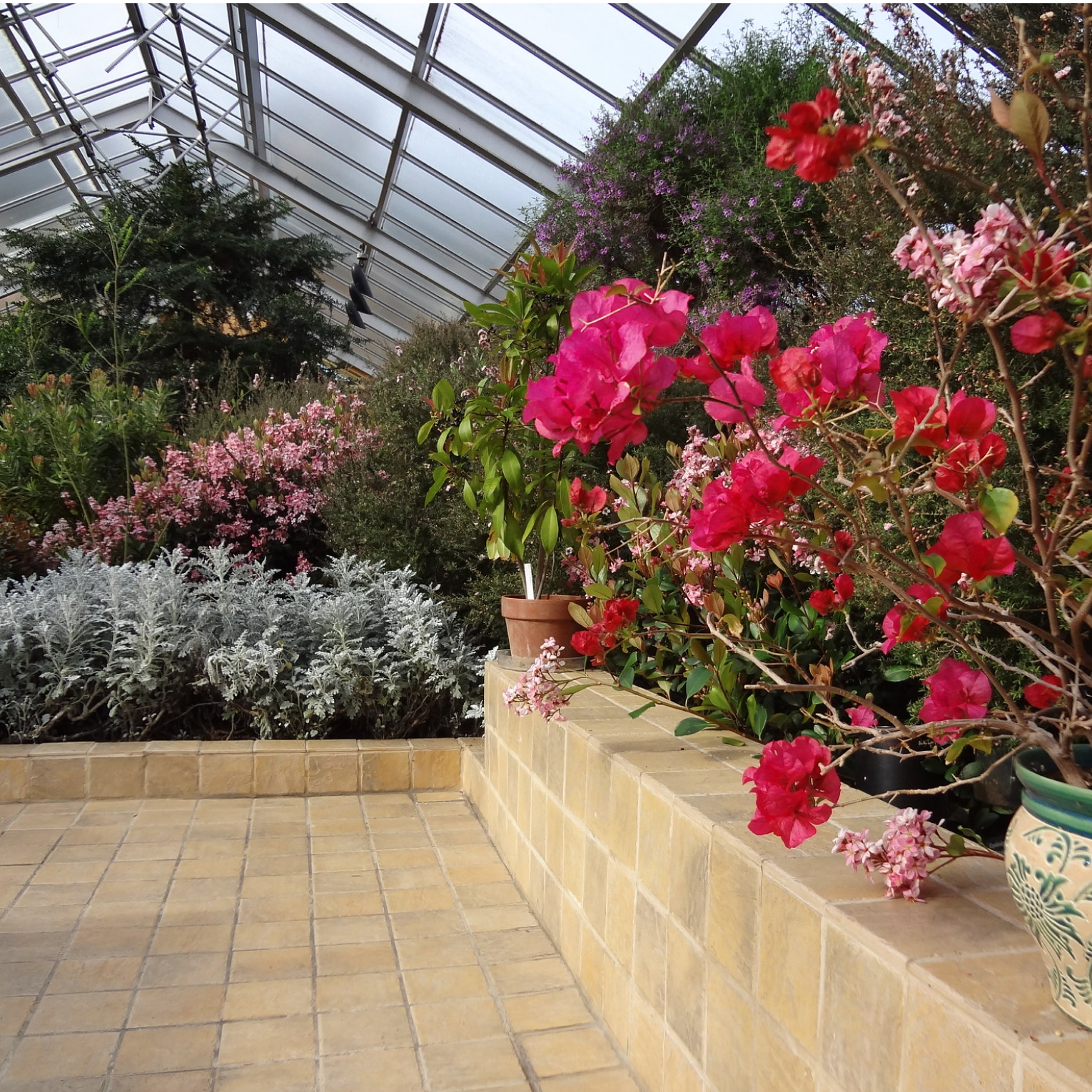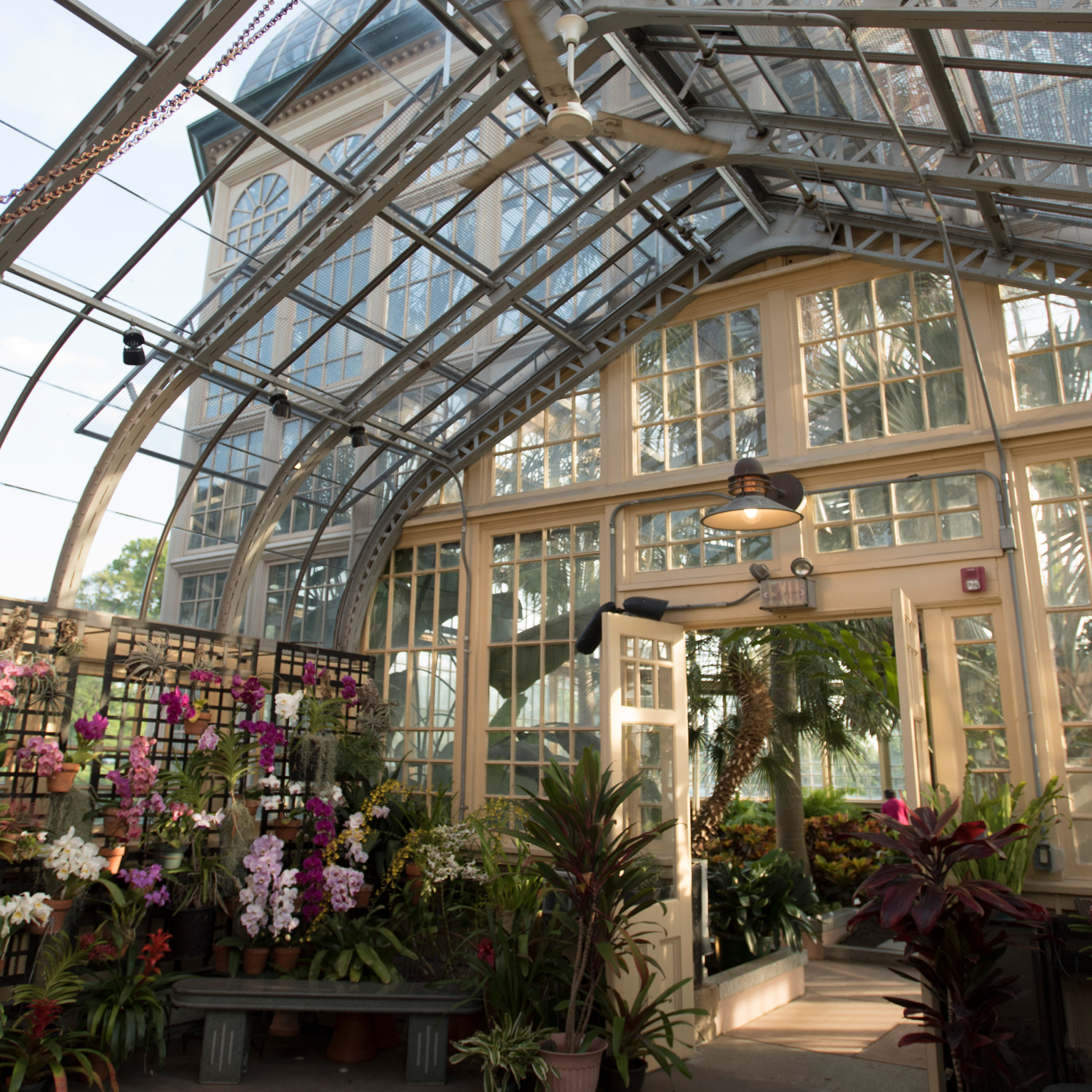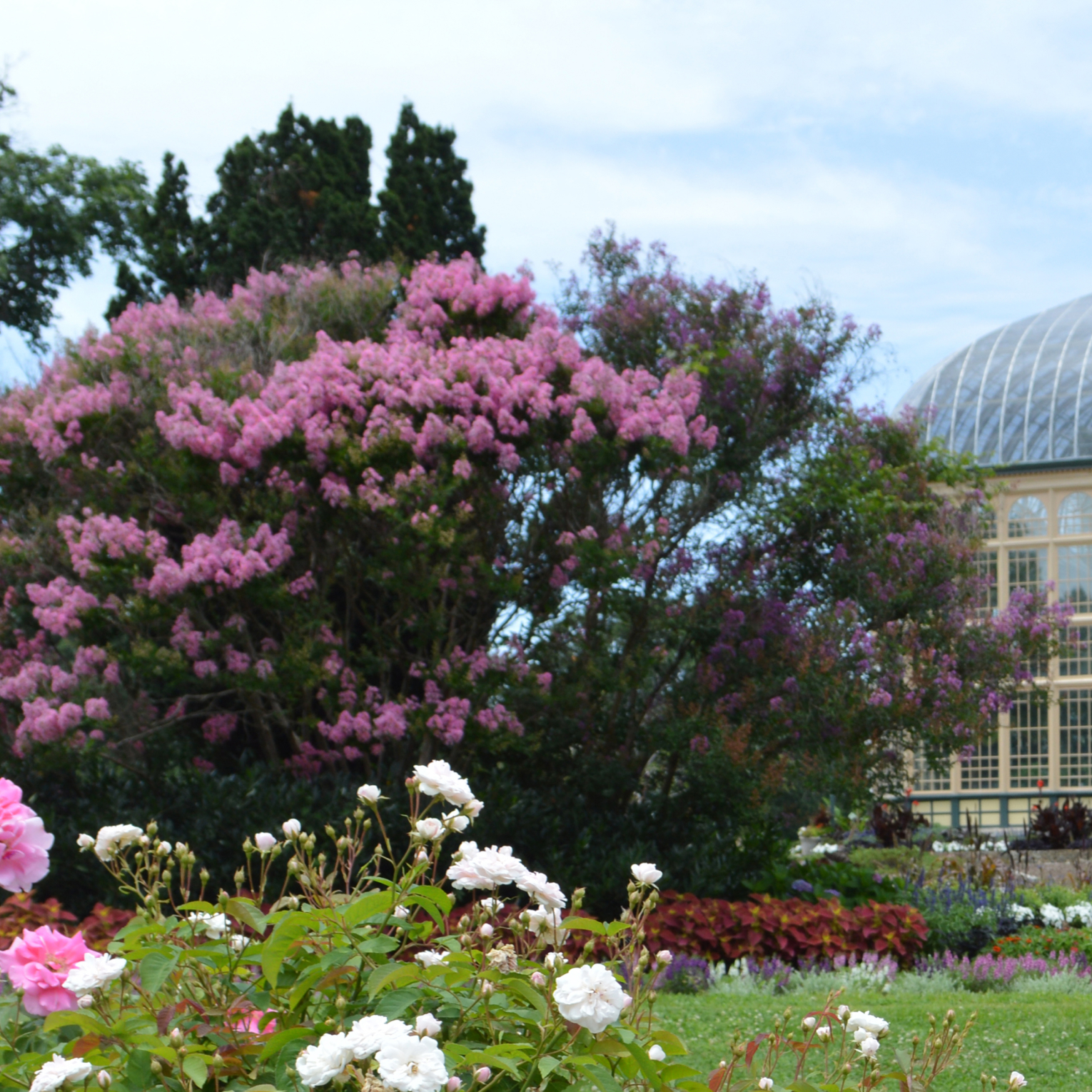Tropical House
In the lush sanctuary of the Tropical House, plants have evolved unique strategies for survival.
Sunlight is a coveted resource in tropical environments where trees grow tall and the canopy is thick. Some plants boast oversized leaves to reach the sun. Others have leaves with intricate holes that allow them to spread out over greater areas without expending excessive energy and nutrients. Vining plants elegantly climb tree trunks to reach closer to the light above. Higher up in the canopy, epiphytes such as orchids and bromeliads thrive, utilizing aerial roots that survive by attaching to tree branches.
Featured in the Tropical House
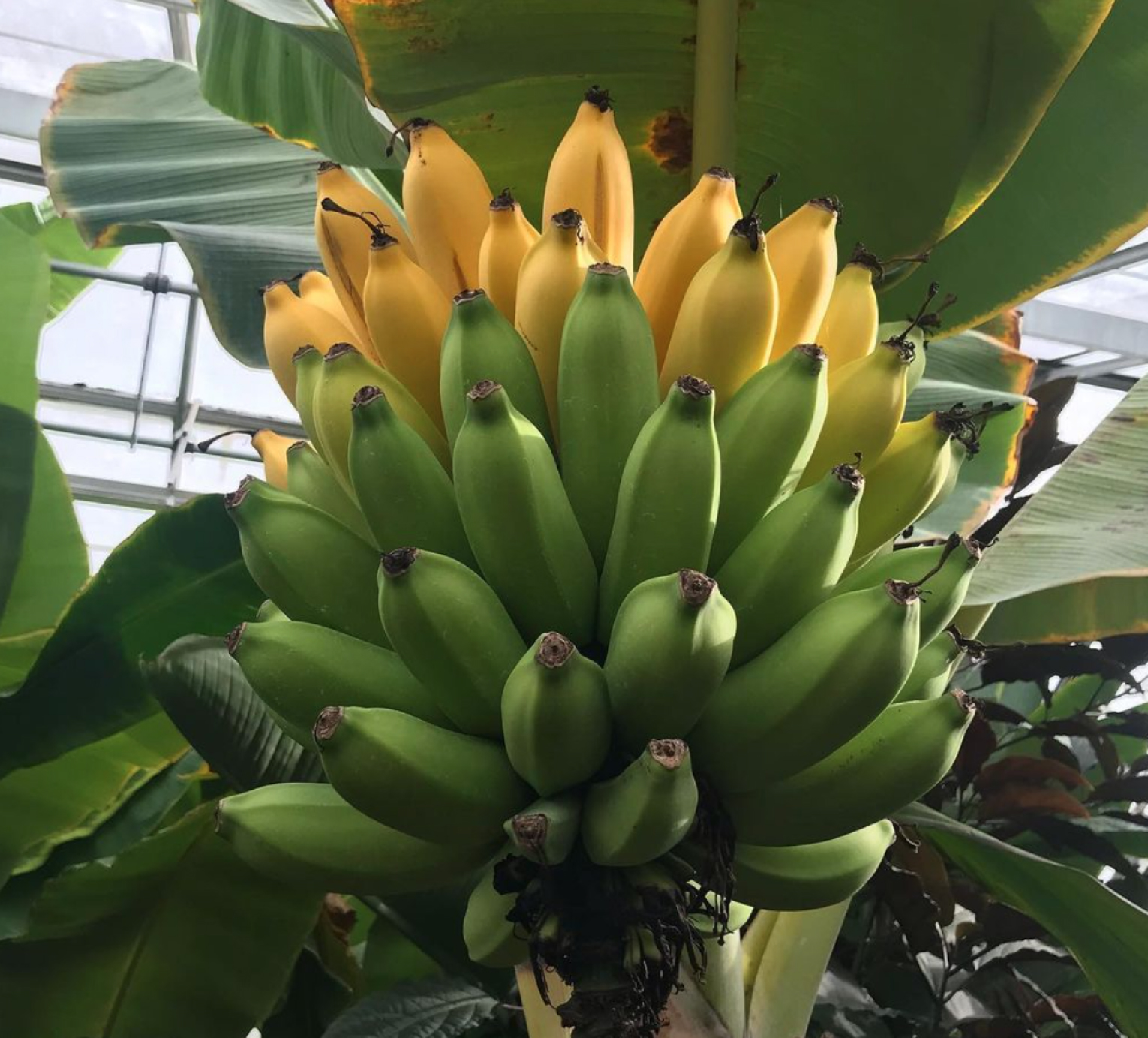
Cavendish Dwarf Banana
Musa acuminata
stalks appear late summer and ripen over winter
The Cavendish Dwarf Banana does not produce seeds and propagates itself by sending shoots up from the rhizome’s growth below the ground. Due to this propagation method, there is little genetic diversity within the banana species.
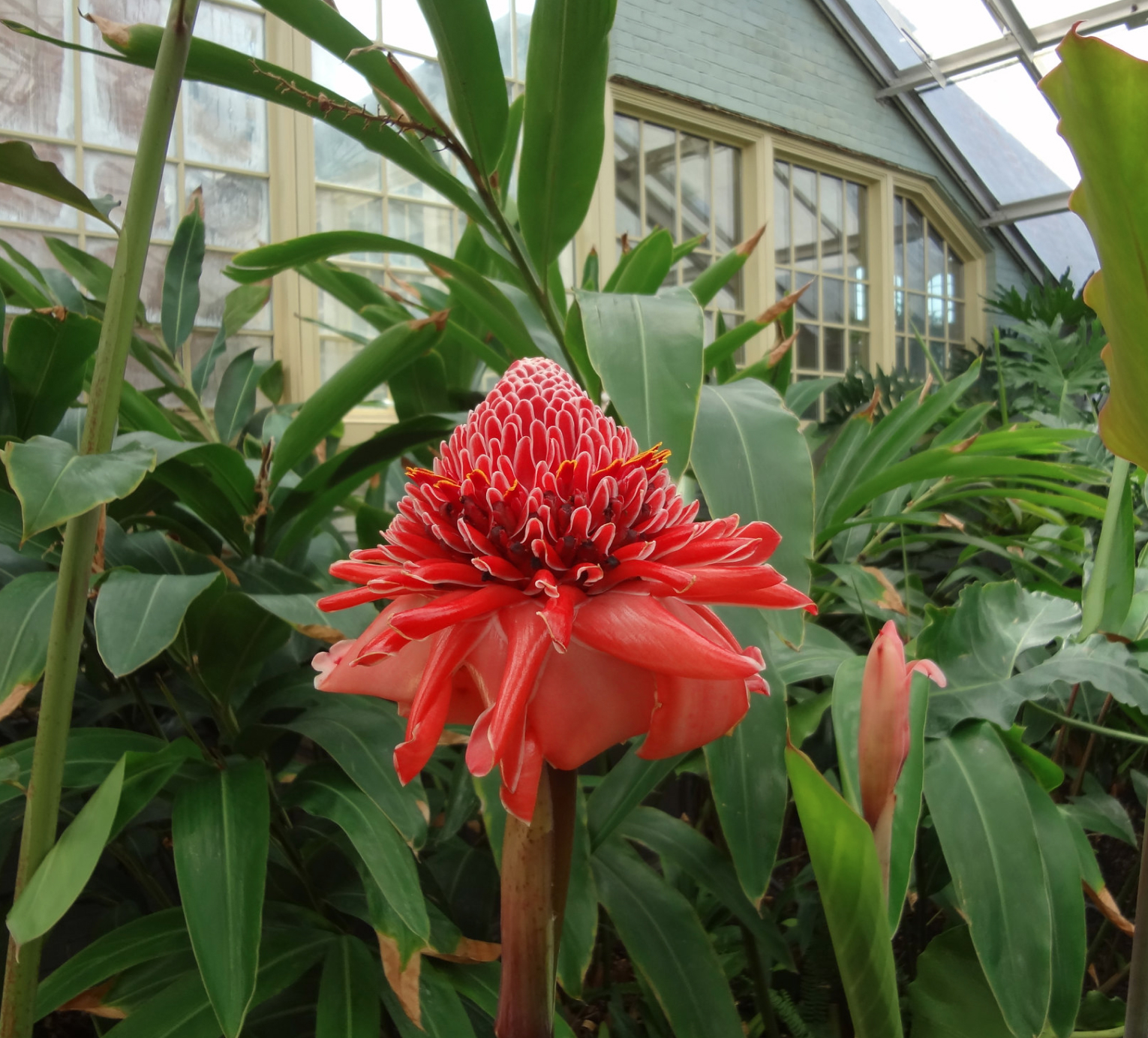
Torch Ginger
Nicolaia elatior 'Thompsonae'
blooms throughout the year
Torch ginger grows quickly in warm and humid conditions. Native to Thailand, Malaysia, and New Guinea. The plant can take up as much as 15 feet of space, aggressively spreading its seeds and rhizomes, i.e., tuberous roots. Because of this tendency, they are considered invasive in some parts of the world, like Hawaii, Costa Rica, and China.
Due to their gorgeous look, people often use them as cut flowers in floral arrangements. But in Southeast Asia, various parts of the plant, like the stem, the fruit, and especially the buds, are often used as a cooking ingredient.
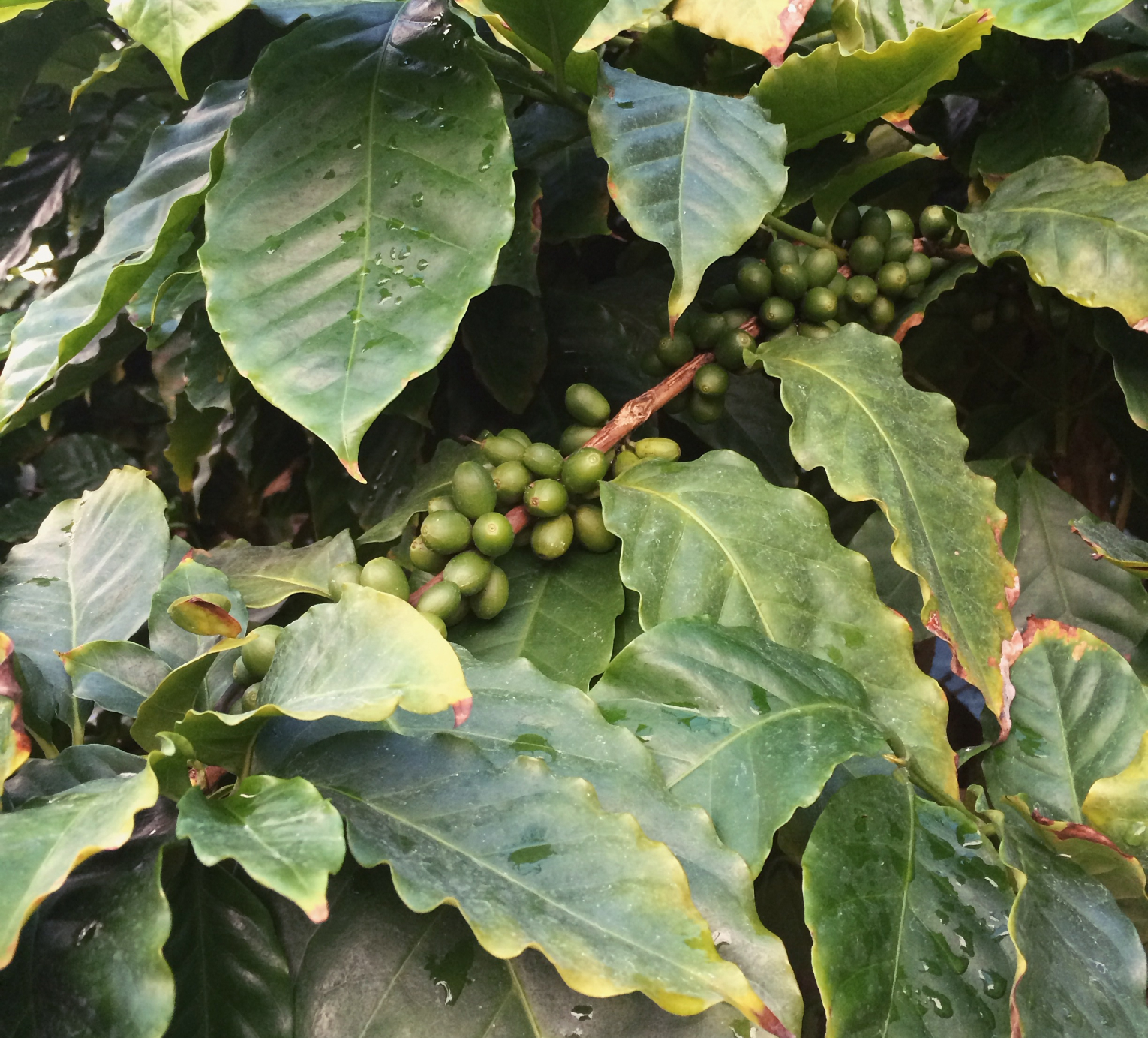
Coffee Plant
Coffee arabica
produces berries late winter to summer
A small evergreen tree native to Ethiopia. Small white flowers will appear in the spring followed by green berries which will turn a dark red when ripe. The pulp on these berries is edible however they are mostly harvested, stripped of all pulp, and roasted for the coffee bean.
Coffee Arabica is known for producing 60% of the world’s coffee.
Koi & Goldfish Pond
Don’t forget to stop by the Tropical House, where the enchanting Koi & Goldfish Pond awaits. Unwind by the pond amidst tropical beauty, and if you’re inclined, swing by the Gift Shop to treat the fish to a snack!
